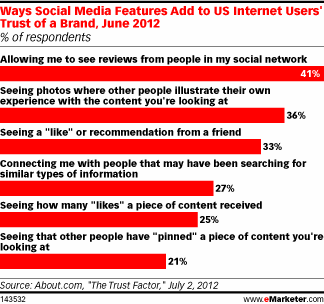Twitter, Pinterest, Instagram are popular with differing demographics
eMarketer estimates that by the end of 2013 there will be 163.5 million social network users in the US, and unsurprisingly they are a diverse group.
A December 2012 study of social networking demographics from the Pew Internet & American Life Project found that Hispanic internet users were most likely to identify themselves as social network users, at 72% penetration, vs. 68% of black and 65% of white internet users. Pew also found that higher concentrations of women than men were social networkers by a margin of nearly 10 percentage points: 71% vs. 62%.
Social networks such as Twitter, Instagram and Pinterest seem to be attracting a particularly diverse coalition of users. Black internet users, for instance, were significantly more likely than average to use Twitter—while 16% of internet users overall said they used the service, 26% of black internet users said they did so. Hispanic internet users were also slightly overrepresented: 19% reported using the service.

Pew found this phenomenon even more pronounced on photo-sharing service Instagram, now owned by Facebook. Black internet users were nearly twice as likely to use it as the average internet user: 23% vs. 13% overall. Hispanic internet users overindexed as well, while whites were slightly less likely than the average internet user to be found on the site. Pew also found Instagram’s users skewed slightly female: 16% of women said they were on it, compared to 10% of men.

The study confirmed Pinterest’s reputation as skewing largely female: Fully one-quarter of female internet users said they were on it, compared to just 5% of male internet users.

Pinterest is also diverse in another way: While most emerging social networking sites skew heavily toward younger users, Pinterest attracts internet users in a broader range of age groups. With its friendly interface and visual orientation, Pinterest is popular with the 18- to 29-year-olds that frequent most social





